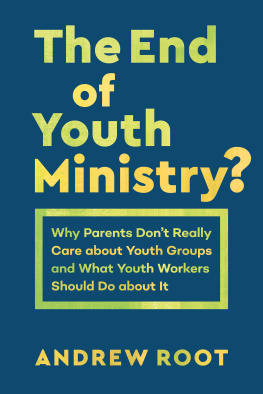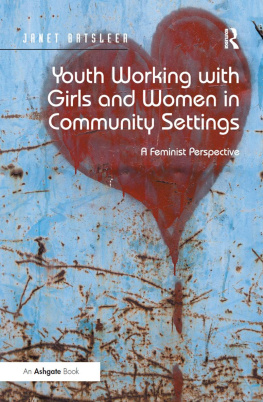The International Library of Sociology
WORKING WITH UNATTACHED YOUTH
Founded by KARL MANNHEIM
The International Library of Sociology
THE SOCIOLOGY OF YOUTH AND ADOLESCENCE
In 12 Volumes
| I | Adolescence | Fleming |
| II | Adolescents and Morality | Eppel and Eppel |
| III | Caring for Children in Trouble | Carlebach |
| IV | Casework in Child Care | Kastell |
| V | Children in Care | Heywood |
| VI | Delinquency and Opportunity
(The above title is not available through Routledge in North America) | Cloward and Ohlin |
| VII | Family Environment and Delinquency
(The above title is not available through Routledge in North America) | Gluech and Glueck |
| VIII | German Youth: Bond or Free | Becker |
| IX | A Psychoanalytical Approach to Juvenile Delinquency | Friedlander |
| X | Studies in the Social Psychology of Adolescence | Richardson and Forrester et al |
| XI | Working with Unattached Youth | Goetschius and Tash |
| XII | Youth and the Social Order | Musgrove |
WORKING WITH UNATTACHED YOUTH
Problem, Approach, Method
The Report of an enquiry into the ways and means of contacting and working with unattached young people in an inner London Borough
by
GEORGE W. GOETSCHIUS
with
M. JOAN TASH
First published 1967
by Routledge
Reprinted in 1998, 2001, 2002
by Routledge
2 Park Square, Milton Park, Abingdon, Oxon, OX14 4RN
Transferred to Digital Printing 2007
Routledge is an imprint of the Taylor & Francis Group
1967 Young Women's Christian Association of Great Britain
All rights reserved. No part of this book may be reprinted or reproduced or utilized in any form or by any electronic, mechanical, or other means, now known or hereafter invented, including photocopying and recording, or in any information storage or retrieval system, without permission in writing from the publishers.
The publishers have made every effort to contact authors/copyright holders of the works reprinted in The International Library of Sociology. This has not been possible in every case, however, and we would welcome correspondence from those individuals/companies we have been unable to trace.
British Library Cataloguing in Publication Data
A CIP catalogue record for this book
is available from the British Library
Working with Unattached Youth
ISBN 0-415-17671-9
The Sociology of Youth and Adolescence: 12 Volumes
ISBN 0-415-17828-2
The International Library of Sociology: 274 Volumes
ISBN 0-415-17838-X
Publisher's Note
The publisher has gone to great lengths to ensure the quality of this reprint but points out that some imperfections in the original may be apparent
LONDON Y.W.C.A. PROJECT COMMITTEE
CHAIRMAN Mrs. F. Glendenning, B.A., Soc.Sci.Cert.
Mrs. P. Bloncourt, B.Sc.(Econ.), Dip.Ed.
Miss N. Chance
Miss B. Hilton, M.A.
Mr. P. Hodge, Dip.Soc.Sci.
Miss J. Kydd, M.B.E., M.A.
Mr. P. Kuenstler, M.A.
Miss H. McSwiney, O.B.E.
Miss Anne E. Bailey, London Y.W.C.A. Area Secretary
(ex ojjicio)
Mr. George W. Goetschius, Training and Research Consultant
Miss M. Joan Tash, Administrator/Supervisor
The authors and the Project Committee regard the publication of this Report as a memorial to Beryl Hilton, whose faith and active hdp in this work were strong from the very beginning until her sudden death on the 19th November, 1965.
FOREWORD
The importance of this book, as I see it, is in the definition of unattachment, and in the perhaps unexpectedly wide range of implications for youth work and the Youth Service that might follow from it.
Unattachment is defined as a conflict in expectations between those who offer the .service (clubs, youth centres and others in the Youth Service) and thosethe young peoplewho want and need it but who are unable or unwilling to accept it on the conditions on which it is offered.
In describing the work that gave rise to this definition, the authors help us to see that the conflict in expectations has its roots in a much wider context than we had been able to see before. They show not only that a wider variety of services might be necessary (help with jobs, boy/girl relationships and family problems, as well as recreation) but also that a wider variety of needs exists, ranging from those of the twelve-year-olds to those of the married couples under twenty.
The field-work, which is the basis of this book, is seen against a background of the social changes which brought about this conflict in expectations. These include increased social, vocational and educational mobility, and particularly higher levels of aspiration, together with changes in social attitudes about authority, discipline, loyalty, etc. There are also .the problems of adolescents attempting to come to terms with themselves and society in situations where we (the youth-serving agencies) are not always able to offer the right kinds of opportunity in the right way at the right time. The authors quite rightly emphasise what they term the cultural poverty of much of contemporary social life as it affects youth and youth work, schooling that does not make sense, work that is boring, repetitive and leads nowhere, and the absence, in many cases, of values and standards in the adult world that are either clearly enough defined to be understood and acceptable, or are seen by the young people as worthy of achievement. The authors indicate that this is an important field for further study.
Of the many practical suggestions and pointers to the way forward, the most important is the recurring emphasis on the need for community-centred attitudes and action. Without minimising the difficulties (some of which were experienced in the field-work) the authors suggest a consideration of the structure and function of the local youth committee and the work of the local Youth Service as the starting point for the creation of such attitudes and action.
Suggestions for advanced and specialised training courses are made, including the possibility of bringing together the adjacent social services (probation officers, youth employment officers, adult indigenous leaders, heads of schools, etc.) as well as those directly concerned with youth work. This idea of a community-centred Youth Service, and the training necessary to establish it, is seen as the logical and natural extension of ordinary educational provision. The annotated bibliography is useful in providing further references to this idea.
A good deal of this material, I believe, will be of use to those teaching youth leadership and to their students, as well as to club leaders and management committees attempting to interpret the needs of the unattached in their communities. It should be of help as well to those who are beginning or are already involved in similar work. The role of the worker and his problems in the field are fully documented and discussed. (In this, as in other sections, it is possible to catch something of the actual excitement, stress and frustration that belong to this work.) The comments on the role of the agency, especially as it is affected by the conflicts in values and standards among the parties concerned, are valuable. The interest of this study, however, is not confined to those directly concerned in the field of youth work. The general public will find many answers to the questions they ask about youth work and the relevance of Christian commitment to youth work.









